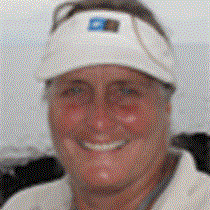Isabela Island
We slept peacefully while anchored off Fernandina last night; just before dawn we began our short navigation to the east across a mirror-smooth sea to where the Captain had his boson drop anchor in Urbina Bay, Isabela Island. Urbina is an unusual place even in this volcanic archipelago because in 1954 several kilometers of this coastline were almost instantaneously uplifted when magma shifted unground. For many years, as the exposed marine organisms decomposed and the corals disintegrated in the blazing equatorial sun, nothing grew where the sea had once washed. But as time passed and the salt was rinsed away by the rain, and soil began to accumulate, plants took root on top of coral rubble and marine sands and now the shrubs and bushes are thick and green here. But there are huge corals heads a quarter of a mile inland and long dead marine worm tubes on the rocks which are testament to the unusual process that occurred almost 60 years ago.
When I first began guiding 35 years ago there was very little growth yet on the exposed seafloor. Today we were delighted and amazed to find 15 giant tortoises feeding and resting among the dense vegetation here. I have never seen this many tortoises at Urbina Bay! For years the vegetation growth was poor and then this area was overrun by feral goats which have since been eradicated. This year we’ve had plentiful rainfall and so tortoises have come down from Volcan Alcedo to take advantage of the abundant food. We found individuals ranging greatly in size and age and they were feeding, resting and even mating this morning. It was exciting for us all to find these ancient reptiles in the wild, roaming unmolested by any introduced species, much as Charles Darwin had seen them almost 180 years ago.
Hikers chose between a long rocky two mile hike or a short ½ mile walk and everyone who went out got great photos of both the tortoises and of several large yellow land iguanas that we found. Back on the beach we cooled off in the ocean before returning to the ship for lunch and a deserved siesta.
In the afternoon we had options to select from: kayaking, snorkeling, a hike for a view of a crater lake, or a Zodiac ride. The kayaking was excellent and we enjoyed paddling alongside sea lions, sea turtles, flightless cormorants, penguins, and marine iguanas. The snorkelers saw all of these same species but up close and eye to eye in the water! Both kayakers and snorkelers were enchanted by the fearlessness of all these creatures: birds, reptiles, and marine mammals.
The hikers climbed wooden steps and then walked along a gently rising trail beneath palo santo trees and singing finches to where they had a lovely view down to a crater lake and back into the cove where the National Geographic Islander lay at anchor. They set a swift pace so they were able to climb to the end of the trail where they had a marvelous view of Darwin Volcano beyond and above them. Those who went on the Zodiac ride with me spotted a seldom-seen Galápagos martin and were entertained by sea lions, diving blue-footed boobies, and swimming marine iguanas. In the evening back on board we gathered in the lounge for a presentation on my research and to learn about tomorrow’s activities. We sailed all night on a calm sea, leaving behind the youngest volcanoes in the west and returning to the central islands.




